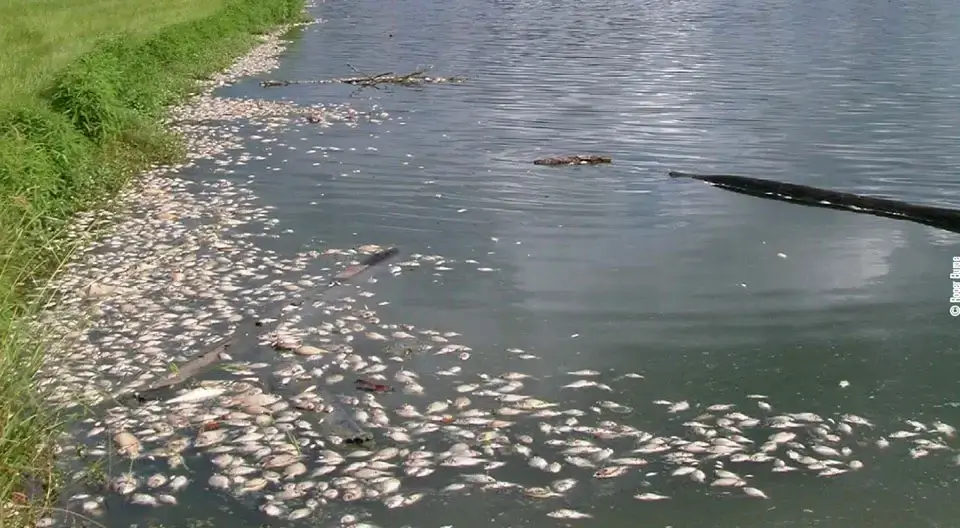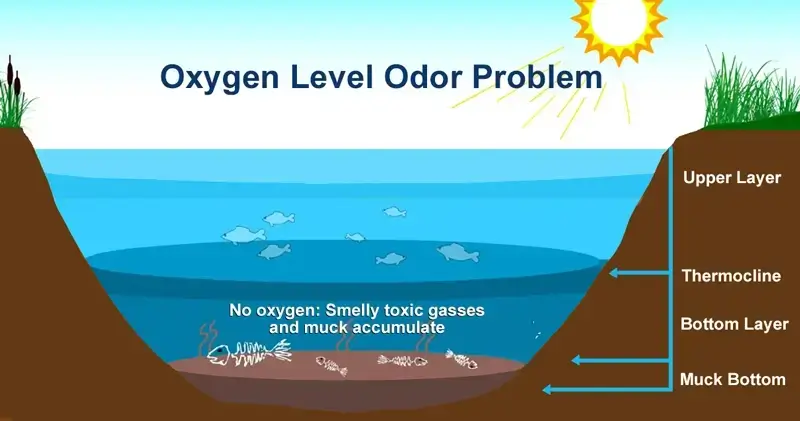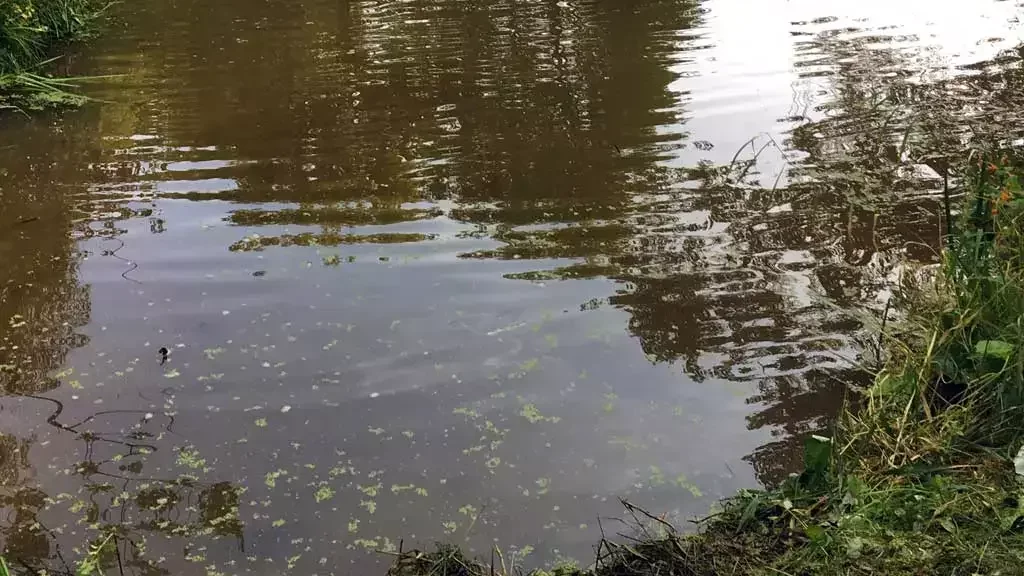Ponds can be a great addition to any property, but it’s important to be able to tell when they’ve turned over. This can be dangerous for humans and animals, so you must know how to identify the signs.
This blog post will discuss how to tell if a pond has turned over and what you should do if you spot them. So stay safe and keep your pond healthy by reading this post.
What is Pond Turned Over?

A pond turned over is a serious issue and can be dangerous for humans and animals. When a pond turns over, the water in the pond becomes aerated, and it can no longer hold oxygen.
This can lead to fish kills and other forms of aquatic life dying. A pond turned over can also produce a foul odor.
If you suspect that your pond has turned over, it’s important to take action quickly. The first thing you should do is remove any fish or other aquatic life from the pond.
Next, you’ll want to add an oxygenating agent to the water. This will help aerate the water and make it safe for fish and other aquatic life.
Finally, you’ll want to test the water quality to ensure that it’s safe for swimming.
How to Tell If a Pond Has Turned Over
There are a few telltale signs you can look for to determine if your pond has turned over. Here’s the list of signs, including:
- The water is murky and has a dark tint to it
- There is an abundance of algae or weeds growing in the pond
- The fish are gasping for air at the surface of the water
- The water temperature is cooler than usual
If you notice any of these signs, your pond has likely turned over. But, don’t worry; it’s not the end of the world. Here are a few things you can do to remedy the situation:
- Introduce some oxygen into the water using an air pump or fountain
- Add aquatic plants such as lilies, which will help to improve water quality
- If there is a lot of debris in the pond, remove it using a net
- If the water is still murky after taking these steps, consider adding a clarifying agent such as alum or soda ash
Pond turnover can be frustrating, but with a little bit of work, you can get your pond back to its former glory. Follow these tips, and you’ll be on your way.
Why Does Pond Turned Over Happen?

The pond turned over happens when the water temperature in the pond changes. The warmer water at the bottom of the pond rises to the top and displaces the colder water.
This can happen in spring and fall but is more common in fall because ponds typically experience their biggest temperature swings.
There are a few things that can trigger a pond to turn over:
- A sudden drop in temperature
- A gradual change in temperature over time
- Changes in the amount of sunlight the pond receives
- Changes in the amount of rainfall or snowmelt the pond receives
Pond turnover is a natural process that helps oxygenate the water and stir up the sediment at the bottom of the pond.
It’s also a way for fish and other aquatic creatures to move from one part of the pond to another.
How to Help Your Pond Through the Turnover Process?
The process of a pond turning over can be difficult for the fish and other aquatic life that call it home. However, there are a few things you can do to help your pond through this time:
- Keep the water level high. This will keep more oxygen in the water and help prevent any fish fatalities.
- Add some floating plants. These will help to oxygenate the water and provide a refuge for the fish.
- Add some aerators. These will help to circulate the water and add oxygen.
- Do not stock your pond with any new fish until it has stabilized.
If you follow these tips, your pond should rebound quickly and be back to its usual self in no time.
What You Can Expect After the Turnover Is Complete?
Once the turnover is complete, you will see an increase in the clarity of the water and a decrease in the number of algae present. The pond will also have a more uniform temperature throughout.
You may also notice an increase in the number of fish or other aquatic life present in the pond as well. But, again, all of these changes are normal and expected after the turnover process is finished.
If you have any questions or concerns about how your pond is doing following the turnover, be sure to reach out to a professional for assistance.
They will help guide you through this process and answer any questions.
How Often Should the Water in Your Pond Be Changed?
This answer depends on the size of your pond and how often you stock it with fish. However, a general rule of thumb is to change 25% of the water in your pond every week.
If you have a large pond, you may need to change it more frequently than this.
Pond turnover is a necessary process that helps to keep your pond healthy and clean.
During turnover, the water in your pond is mixed and circulated so that oxygen can be evenly distributed throughout. This process also helps to remove waste and toxins from the water.
What Happens to Fish When a Pond Turns Over?

The fish in your pond may experience some stress during the turnover process. This is because the oxygen levels in the water will be lower than usual.
However, if you have a healthy population of fish, they should adapt to the changes in oxygen levels without any problems.
If you are concerned about your fish, you can always move them to a holding tank or another pond until the turnover is complete.
Where Does Bass Go When a Pond Turns Over?
The honest answer is that no one knows for sure. Some bass will head for deeper water, while others may stay put and wait things out.
The key for bass anglers is to identify when a pond has turned over to make the necessary adjustments to their fishing strategy.
How Can I Tell If My Pond is Healthy?
One of the most important things you can do to maintain the health of your pond is to be aware of how it behaves and changes throughout the year.
One telltale sign that your pond is going through a natural process called turnover is that the water will start to look cloudy or murky.
This happens when the bottom of the pond, which is typically full of decaying matter, becomes exposed to the air. If you see this happening, don’t worry – it’s a normal process that all ponds go through from time to time.
How Often in a Year Does a Lake Turnover?
Most lakes will turnover once a year, usually in the fall. However, some larger lakes can take up to two years to complete a full turnover.
You can often tell when a lake is about to turn over because the water will become murky, and the temperature will drop suddenly. However, the best way to know for sure if your pond has turned over is to look for specific signs.
Should I Get Rid of Dead Fish From My Pond?
The simple answer is no. You should not remove dead fish from a pond unless you know that the pond has turned over.
Turning over a pond is a natural way for the ecosystem to cleanse itself, and it is important not to interfere with this process.
Why Are My Fish in My Pond Dying?
This is a question that pond owners often ask when they see dead fish in their ponds. There are many reasons why fish can die in a pond, but pond turnover is one of the most common causes.
Pond turnover occurs when the water in a pond changes from being oxygen-rich to oxygen-poor. This happens when the warm top water layers mix with the cooler, oxygen-rich bottom layers. The fish in a pond can’t survive in these conditions, so they die.
What Color Should Pond Water Be?
Pond water should be clear and free of debris. If you notice the water is cloudy or has a green tint, this could signify that the pond has turned over.
Another sign that a pond has turned over is seeing dead fish floating on the surface. This is because the oxygen levels in the water have decreased, making it difficult for the fish to breathe.
If you see any of these signs, it is important to take action and get your pond back to its healthy state.
Conclusion
If you see any of the signs above, your pond has likely turned over. This is a natural process that happens every year and doesn’t usually cause any harm to the ecosystem.
However, if you’re concerned about the health of your pond, it’s always best to consult with a professional. They can help you determine if you need to do anything to help the pond recover.
